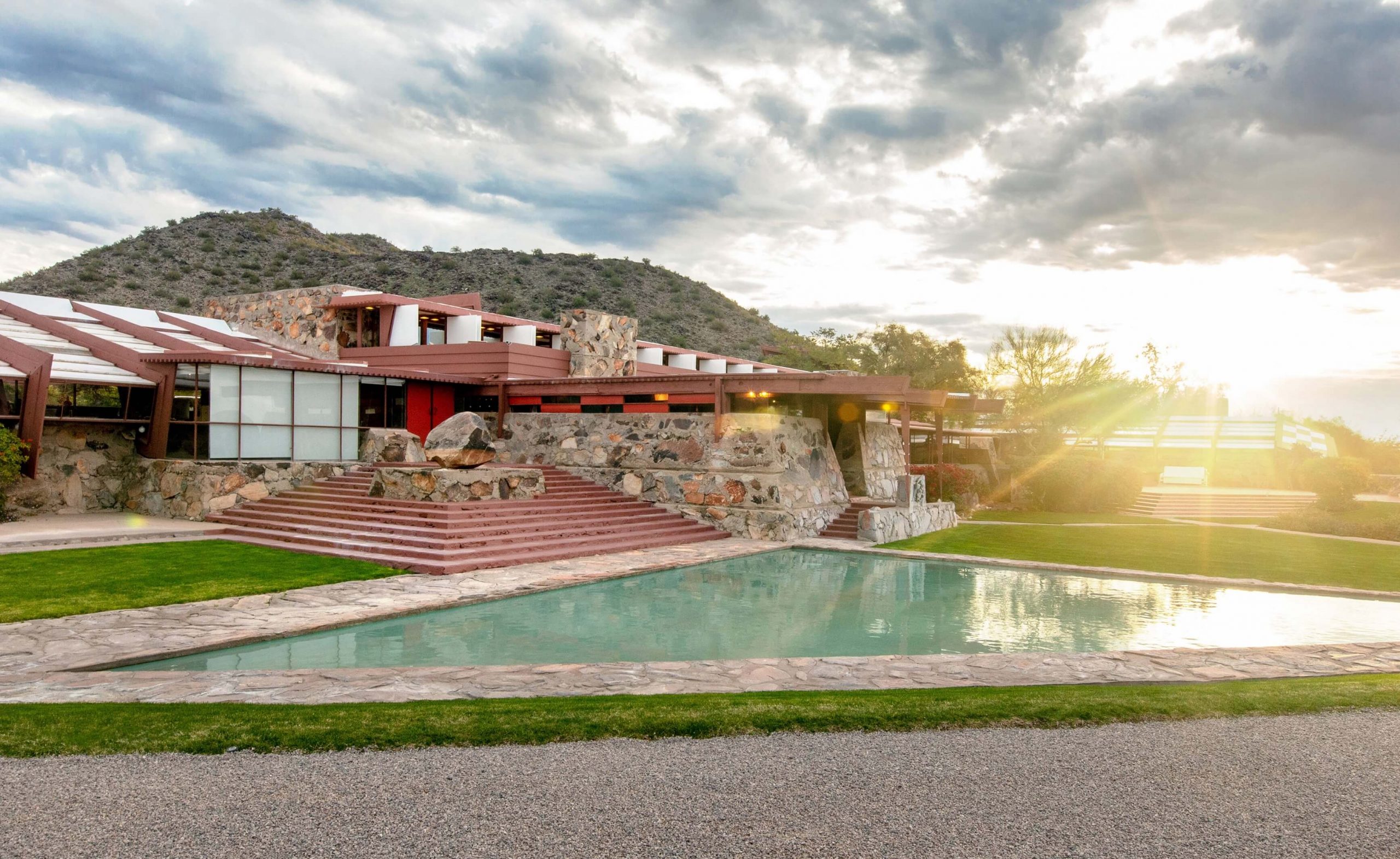
By Annika Tomlin
Frank Lloyd Wright began building Taliesin West as his winter camp way back in 1938. Today it still stands as one of the most well-known houses in the world, being recently inscribed as a UNESCO World Heritage site along with Taliesin in Wisconsin. The Frank Lloyd Wright Foundation is in constant planning and preservation mode to keep up with the legacy of Taliesin West as an ever-evolving set of buildings.
“We are always trying to keep it preserved for future generations,” says Foundation Vice President of Preservation Fred Prozzillo.
There are four different preservation efforts that are a priority for 2020.
“If we have to effect change, we do it sympathetically and to safeguard the property,” he says.
Accessibility
As a new UNESCO World Heritage site, there has been an influx of visitors to Taliesin West, and the Foundation wants to ensure that people from all walks of life are able to experience Wright’s work. Three new ramps made out of stabilized decomposed granite will give people who use wheelchairs, walkers or have other mobility restrictions an easier way to travel around the location. Prozzillo and his team wanted to find a material that still felt like gravel or a soil-like surface and came across stabilized decomposed granite.
“It helps ground the spaces with the desert,” says Prozzillo. “It makes the building feel like it’s more integrated into the landscape.”
One of the ramps leads to an area where all of Taliesin West can be seen, and then you can turn around and see the Valley. The path then leads to an accessible indoor area for people to view Taliesin West as a computer-generated model.
Within this space, there is also a new ADA-compliant bathroom. Each level of Taliesin West will have an ADA-compliant bathroom.
Water and Electrical Infrastructure
In short, the old pipes need to go. The galvanized pipe used for the water and electrical infrastructure that is currently under the buildings is the original infrastructure that was laid down in 1938. Typically, that kind of plumbing has a 40-year lifespan. Right now, the age of plumbing is more than double that. The challenge for replacing the plumbing is to not destroy the historic concrete floors, gardens and walkways around the building. Prozzillo, his team and assisting engineers came up with the concept of horizontal directional boring.
“We want to use (this technique) here not only to protect our gardens but to also show that we can use this kind of technology at Taliesin West,” says Prozzillo. “It’s a great option for any municipality or property.”
This technique consists of creating a small pit away from all of the historic landscape and another small pit towards the building and piping the new infrastructure through the side, not damaging or uprooting any of the property.
“We’d like to continue the idea that Taliesin West is a place of learning and as a teaching tool for Frank Lloyd Wright,” he explains. “We want to continue that legacy by offering up these projects for people to learn from.”
Fabric Roofs
The original roofing of the main buildings was canvas. Wright wanted parts of the estate to have a more open concept and be able to pull back the roof and let the natural light and breezes of the desert flow through. The canvas was changed almost yearly because it could not withstand the desert summertime climate. The roof transitioned to fiberglass in 1960s and then eventually now to acrylic.
“[The fabric roofs] made the buildings really dynamic and poetic,” says Prozzillo.
There is currently no official fabric that has been chosen to replace the current acrylic panels. Prozzillo and his team are looking into fabrics that will restore the poetic feeling that they once gave while Wright was alive. One option is PTFE, which is a fiberglass fabric. This kind of fabric has been used for the roofing at the Denver International Airport and other buildings in Saudi Arabia. The lifespan of this kind of fabric is decades, compared to the original canvas that lasted at most two years.
“We can use a fabric to get back to something that was closer to Wright’s time period and develop new ways to connect these fabric panels to the beams so that we are not altering the historic character and historic appearance of the building,” Prozzillo says.
Once a fabric is chosen, the preservation team will apply it to a single roof for a year to two-year time period and test its ability to withstand the Arizona weather and the constant manipulation of pulling it up and down to allow cross-ventilation in the building.
Hillside Theatre
This 120-year-old structure is in need of restorations. A two-year project will address the compromised building foundation and exterior sandstone walls. Like the rest of the buildings, heat and electrical infrastructure will be replaced, an ADA-compliant restroom will be added, and two rooms will be added to the building to allow for more events on the property.
For more information, visit www.franklloydwright.org/preservation.
Keep up with all of Green Living’s content by visiting our website.
Annika Tomlin is a recent Walter Cronkite School of Journalism and Mass Communication graduate who loves writing and photography. When she is not working, she enjoys spending time with her cat, Becks, and going on hikes around the Valley.




